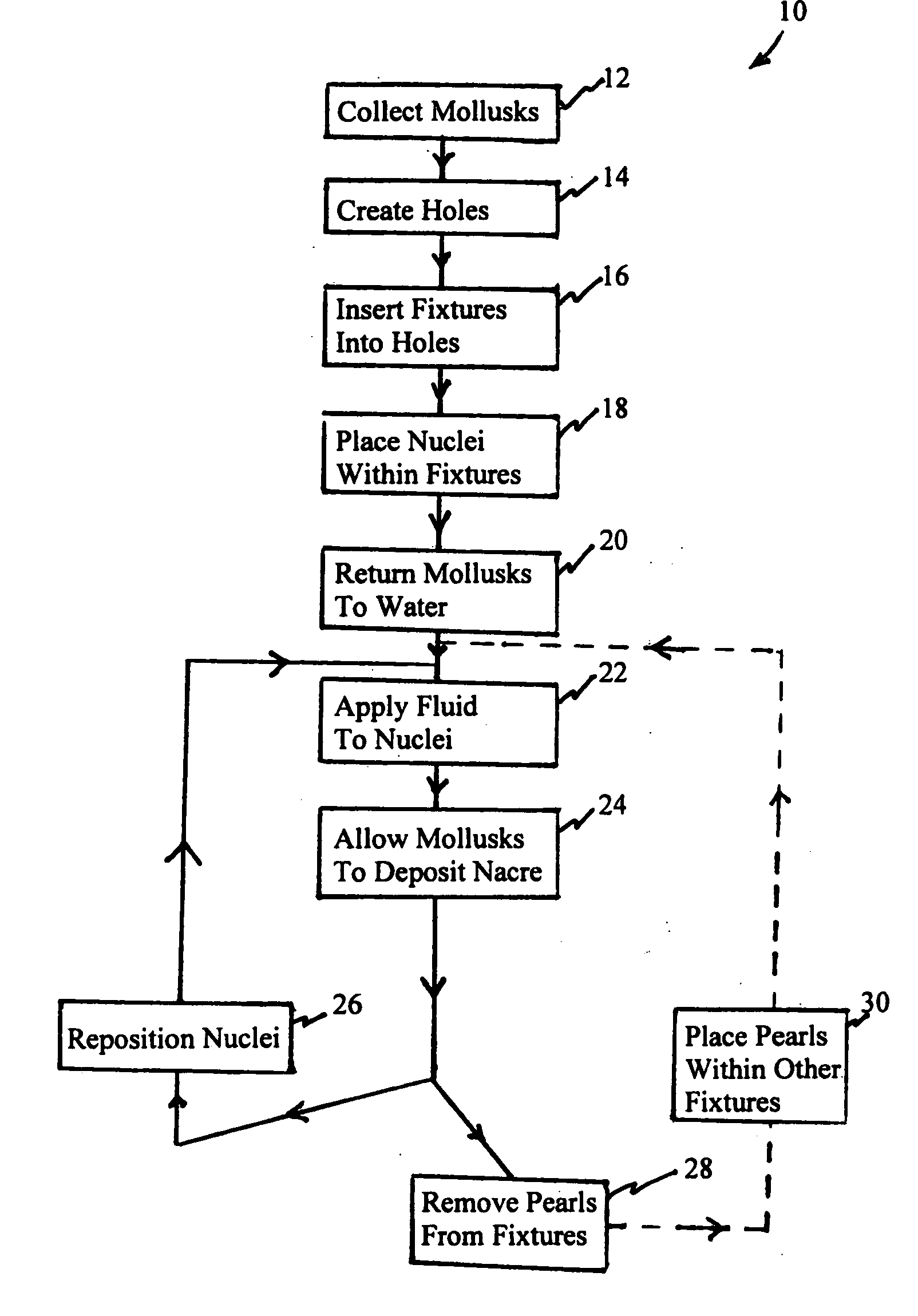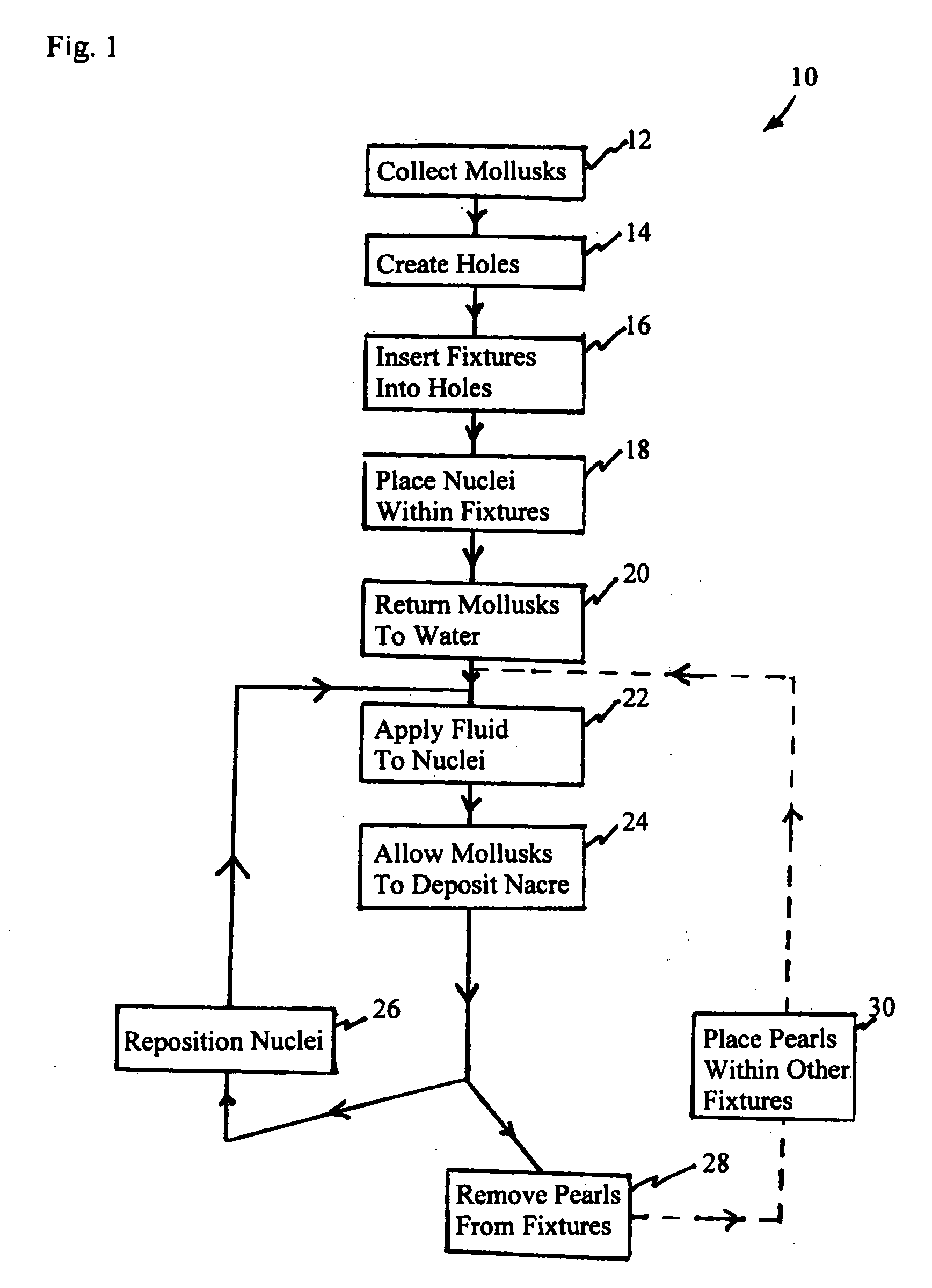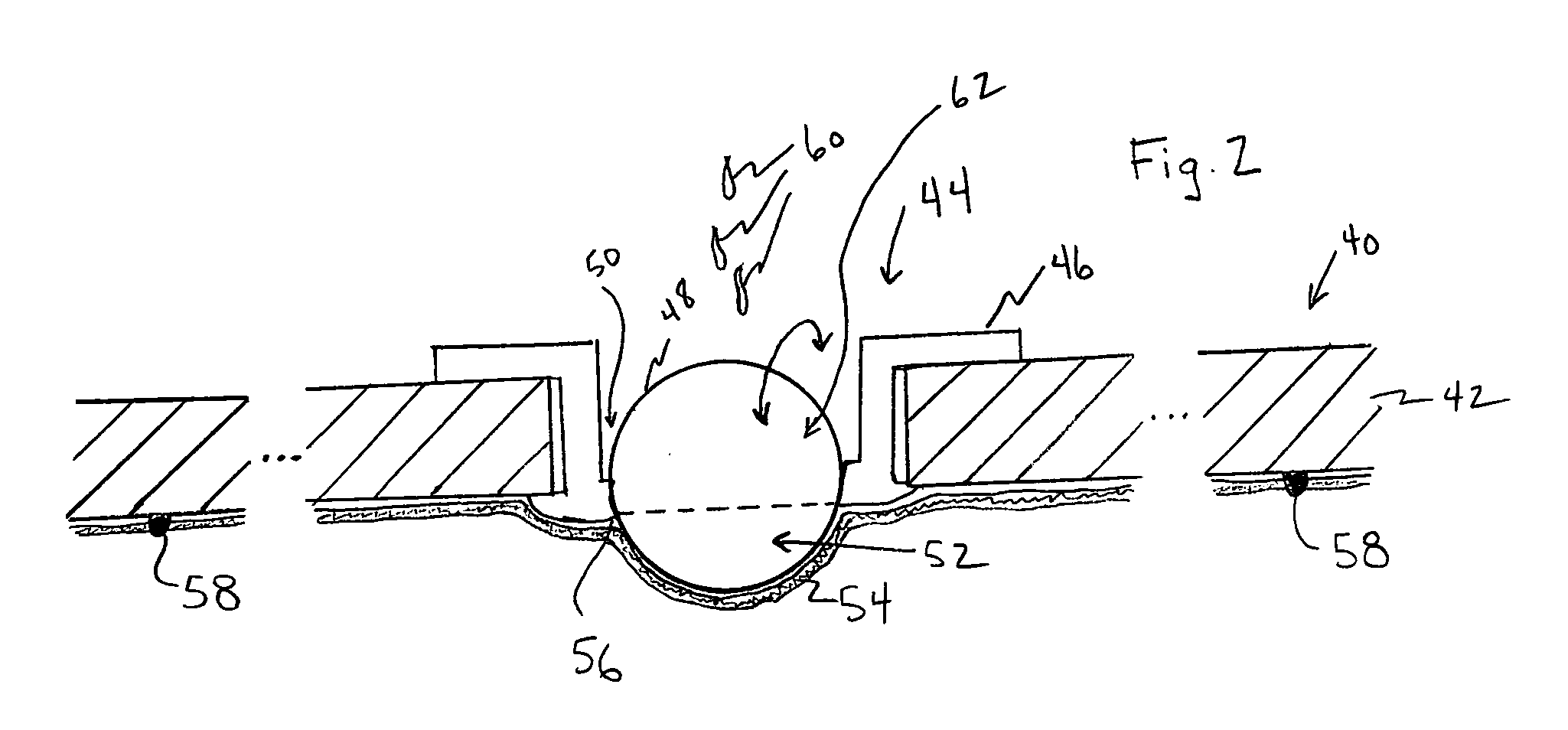Pearl culture method and product
a technology of pearls and culture methods, applied in pisciculture, aquaria, climate change adaptation, etc., can solve the problems of over 50% of implanted oysters, difficult and laborious current nucleated pearl production methods, and significant limitations of each
- Summary
- Abstract
- Description
- Claims
- Application Information
AI Technical Summary
Benefits of technology
Problems solved by technology
Method used
Image
Examples
Embodiment Construction
[0020]FIG. 1 is a flowchart that depicts various processes associated with embodiments of the present invention. Inventive Process 10 typically begins with Collect Mollusks 12, which involves collecting mollusks to begin the pearl culturing process. Suitable freshwater mollusks for carrying out the present invention include but are not limited to Freshwater Pearl Mussels (family Unionidae, genus Hyriopsis, Cristaria, Margaritifera, etc.), particularly Tampico Pearlymussel (Cyrtonaias tampicoensis); Yellow Sandshell (Lampsilis teres); and Pink Lady-Finger (Elliptio dilatatus). Suitable saltwater mollusks for carrying out the present invention include but are not limited to: Pearl Oysters (genus Pinctada and Pteria); Abalone (genus Haliotis); and Conchs (genus Strombus). Suitable mollusks for pearl culture often have lustrous nacre on the inner surface of the mollusk's shell and may have a variety of colors such as white, silver, grey, black, salmon, or purple. Some types of suitable ...
PUM
 Login to View More
Login to View More Abstract
Description
Claims
Application Information
 Login to View More
Login to View More - R&D
- Intellectual Property
- Life Sciences
- Materials
- Tech Scout
- Unparalleled Data Quality
- Higher Quality Content
- 60% Fewer Hallucinations
Browse by: Latest US Patents, China's latest patents, Technical Efficacy Thesaurus, Application Domain, Technology Topic, Popular Technical Reports.
© 2025 PatSnap. All rights reserved.Legal|Privacy policy|Modern Slavery Act Transparency Statement|Sitemap|About US| Contact US: help@patsnap.com



